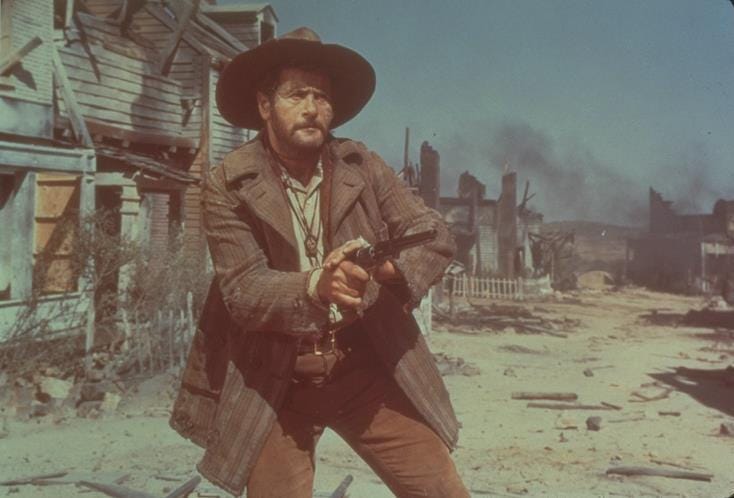We’ve all seen the good Samaritan pulling the man out of his burning car just in nick of time, the maniac scaling an apartment complex to save her neighbor’s monkey, the hero on the news explaining why they ran into a burning building to rescue their cat.
“What were you thinking?” the reporter usually asks. “I didn’t have time to think,” the hero replies. Because hey, sometimes overthinking gets in the way. In moments of high action, thinking tends to take a back seat. When the going gets tough, you have to act. Follow your guts, if you’ve got any. As Tuco advises in The Good, the Bad and the Ugly: “When you have to shoot, shoot. Don’t talk.”
How to begin a beginning? Just begin, as Hemingway did...
In Medias Res
From “The Battler” by Ernest Hemingway:
Nick stood up. He was all right. He looked up the track at the lights of the caboose going out of sight around the curve. There was water on both sides of the track, then tamarack swamp.
He felt of his knee. The pants were torn and the skin was barked. His hands were scraped and there were sand and cinders driven up under his nails. He went over to the edge of the track down the little slope to the water and washed his hands. He washed them carefully in the cold water, getting the dirt out from the nails. He squatted down and bathed his knee.
“He who can read can run,” says William Burroughs (and he will have to in order to keep up with “The Battler”). If you get the sense that you’ve missed something it’s probably because you’ve been thrown into the middle of the action. The first two paragraphs of the story show us poor Nick, who has apparently fallen or jumped from a moving train. We don’t know why. All we know is that his knee hurts and there goes the train around the curve. No time to stop and think. We’re in the thick of it.
Here’s another:
From “The Killers” by Ernest Hemingway
The door of Henry’s lunchroom opened and two men came in. They sat down at the counter.
“What’s yours?” George asked them.
“I don’t know,” one of the men said. “What do you want to eat, Al?”
“I don’t know,” said Al. “I don’t know what I want to eat.”
Outside it was getting dark. The streetlight came on outside the window. The two men at the counter read the menu. From the other end of the counter Nick Adams watched them. He had been talking to George when they came in.
“I’ll have a roast pork tenderloin with apple sauce and mashed potatoes,” the first man said.
“It isn’t ready yet.”
“What the hell do you put it on the card for?”
“That’s the dinner,” George explained. “You can get that at six o’clock.”
George looked at the clock on the wall behind the counter.
“It’s five o’clock.”
“The clock says twenty minutes past five,” the second man said.
“It’s twenty minutes fast.”
“Oh, to hell with the clock,” the first man said. “What have you got to eat?”
Opening a door, sitting down, and talking—this gets the story rolling. What’s going on? We’ll have to figure that out as we watch and listen. Notice that paragraph that establishes setting: “Outside it was getting dark…” Why not start there? For another writer, it might have really set the scene. But the effect would have been more cautious, too controlled. Jumping into the scene as Hemingway did challenges the reader to catch up, and pay attention. The train is leaving. The clock is ticking. When you have to eat, eat. Intellectual analysis will not nourish the soul.
“Always get to the dialogue as soon as possible,” P.G. Wodehouse said. “I always feel the thing to go for is speed. Nothing puts the reader off more than a big slab of prose at the start.”
In other words, get to the good stuff! Throw your characters into action—or dialogue—right away, like Hemingway does on the first page, and as Horace advised: In medias res.
Prompt: This is a revision exercise. Dig out a draft you’ve written and move the scene description (action or dialogue) to the top. Save that first paragraph in which you beautifully describe the weather for later. Maybe it will work somewhere down in the middle.


